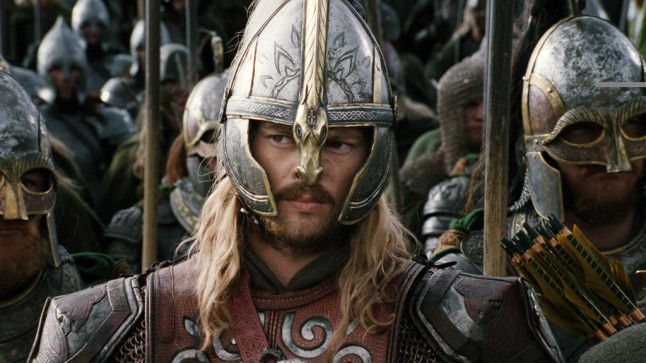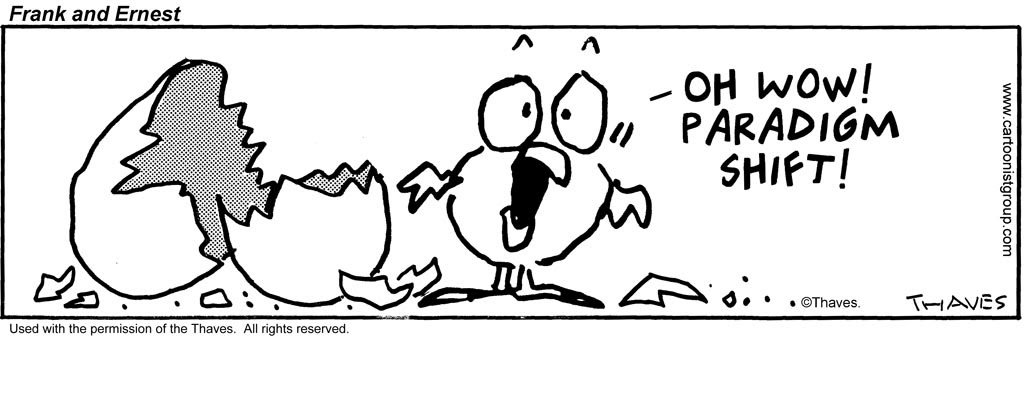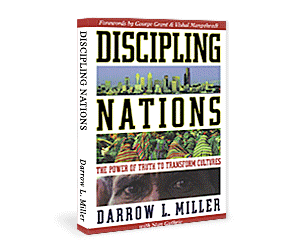God created; He is the first artist. He made us in His image, which includes imagination, the ability to be creative. He is the primary creator, we are the secondary creators. The cultural mandate directs us to take what God has made and to do something with it.
Someone who loves roses can develop new hybrids with different fragrances or colors. When they do this, they function as an image bearer of God, governing roses. Others govern wood; from a block of wood they can make something beautiful.
Every human is made in God’s image, which means every human has an artistic impulse. We are to take what He has made and fashion secondary creations. And His intention is that we reflect Him through our creative activity. God’s art communicates and our art communicates.
Christian folk singer John Michael Talbot says, “In every work of the artist, he praised the Divine Artist.” Our art is to praise the Divine Artist. That doesn’t mean it’s religious art, that is, art depicting some express Christian truth such as the cross, or the Bible, or a church service. In whatever the artist creates he refers to the Maker of all things.
This truth applies not only to the fine arts but to every creative work: an oil painting and a lesson plan, a musical composition and a clean toilet, a literary novel and a tidy home that refreshes a family, an exquisite sculpture and a successful surgery, a pencil sketch and a repaired vehicle, a verse of poetry and a new work process.
Every legitimate occupation is a calling, and every human being is an artist, in the sense that he makes beauty, and in all beauty, divine beauty resides. In beautiful things we 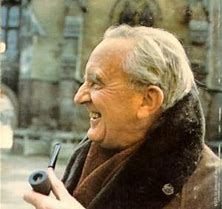 see the divine beauty because God is beautiful.
see the divine beauty because God is beautiful.
Tolkien’s example
J.R.R. Tolkien was a Christian and a writer of fantasy, especially known for The Hobbit and The Lord of the Rings. About the topic of creating beauty he has many profound things to say. If you are interested in this subject, you would do well to read his small book, a sort of theology of art, entitled Tree and Leaf.
Tolkien writes about two elements of successful fantasy. One is the creation of a world in which the reader is immersed. To the degree an author does this, she is successful. The second is “the joy of the happy ending.” That is, the point near the end at which all hope seems lost, sorrow and failure inevitable, then, beyond all hope, deliverance and joy suddenly arrives, “joy beyond the walls of the world, poignant as grief.” He calls this a “eucatastrophe,” a word Tolkien coined by combining eu a Greek prefix meaning “good” and catastrophe defined by dictionary.com as “a sudden and widespread disaster.”
If you know the Lord of the Rings trilogy, for example, picture the climax when the small company of noble warriors is completely surrounded by a mighty horde of evil orcs closing in, the brave and good preparing to die, and at that moment, the ring falls into the fire and is destroyed and the evil enemy hosts dissolve into nothing and all sorrow becomes joy, all darkness becomes light.
Tolkien did not write books about religion, or Christianity or the church. You don’t see the cross there. He doesn’t talk about Jesus, but he is presenting reality through fantasy.
Surprise people by joy
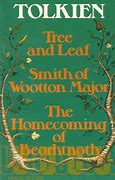 In Tree and Leaf Tolkien discloses his belief about how fantasy (he uses the term “fairy story”) relates to the gospel.
In Tree and Leaf Tolkien discloses his belief about how fantasy (he uses the term “fairy story”) relates to the gospel.
I would venture to say that approaching the Christian Story from this direction, it has long been my feeling (a joyous feeling) that God redeemed the corrupt making-creatures, men, in a way fitting to this aspect, as to others, of their strange nature. The Gospels contain a fairy-story, or a story of a larger kind which embraces all the essence of fairy-stories. They contain many marvels – peculiarly artistic, beautiful and moving … and among the marvels is the greatest and most complete conceivable eucatastrophe. … The Birth of Christ is the eucatastrophe of Man’s history. The Resurrection is the eucatastrophe of the story of the Incarnation. … There is no tale ever told that men would rather find was true.
We recognize our own brokenness, and we long for a Redeemer. Every unsullied human heart longs for a redeemer who will restore his life, even restore all things. Tolkien points to the cross and the resurrection as that story. The gospel is the fantasy that is true.
You Christian artists—in your paintings, your poems, your songs, your stories, your movies—you want people to be surprised by joy, you want them to see reality and joy. Christian artists should think profoundly and deeply. We don’t want to produce junk, but what is true and beautiful, what will shake people’s souls. We are to make new expressions of the timeless. We want our art to reflect transcendence.
Religious art is not necessarily good art
This can be done through religious art, but the standard of good art is not religious depiction. Many Christians discourage artists from getting involved with the arts unless they create religious art. They assume religious art is good art, without any reference to the art’s quality.
The person and work of Christ, the glory of God, these are grand themes, of course; nothing is more worthy of careful artistic treatment. But a poorly done painting of the cross, or a shoddy song about Jesus, these are not good art.
A thoughtful and careful artist opens transcendence to his readers or viewers. If you’ve read Tolkien you’ve been to Middle Earth. If you’ve read The Narnia Chronicles, you’ve walked in Narnia. Tolkien and Lewis created these realms with magnificence. Their work was imaginative and creative, done with excellence. Those of us who have read these books have been to places we’d never been before, and have learned new things about our own world as well. This is good art.
When we create good art, whether it’s a painting or a fantasy, we glorify the creator and come full circle. Our creative activity is to glorify God.
Whether you are a poet, a filmmaker, a dancer, whatever you make, make it for God. Make it so it will glorify God. That’s the frame. It doesn’t have to be religious, but it is meant to glorify God.
- Darrow Miller

